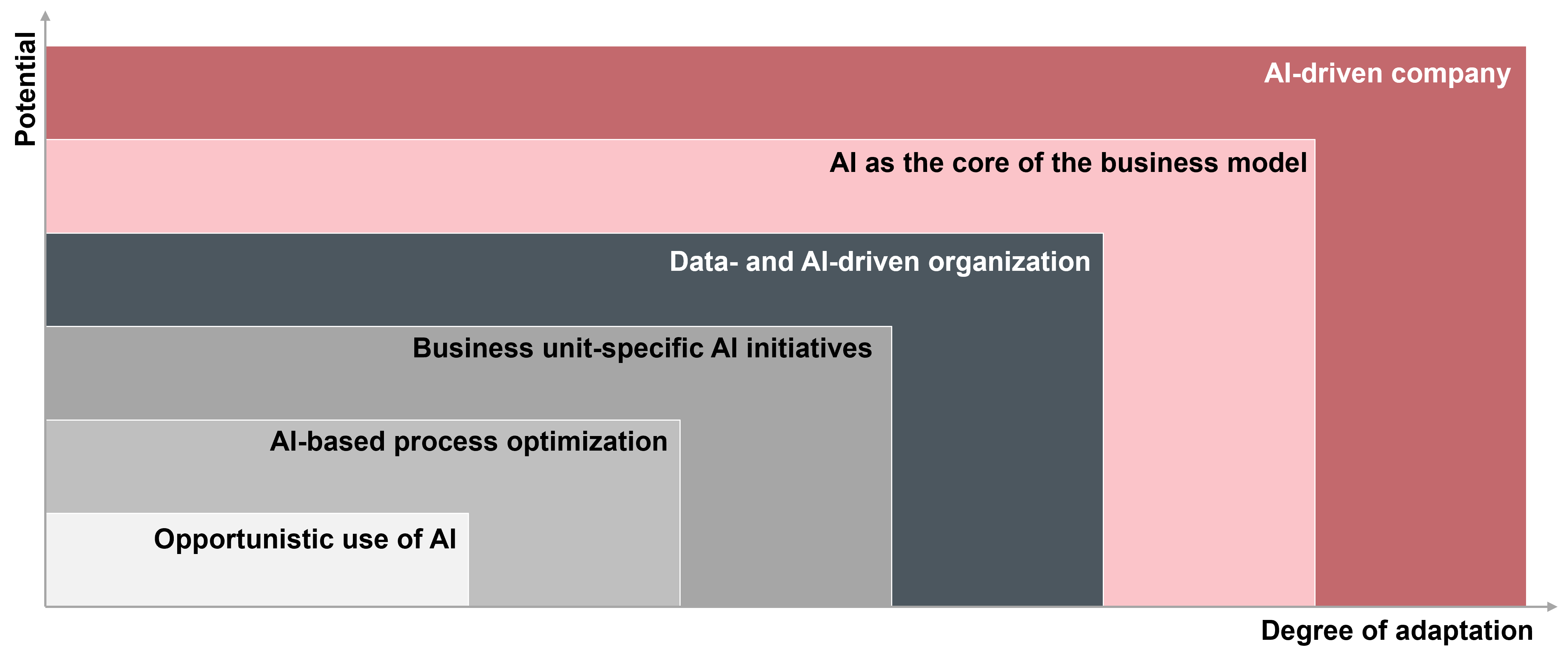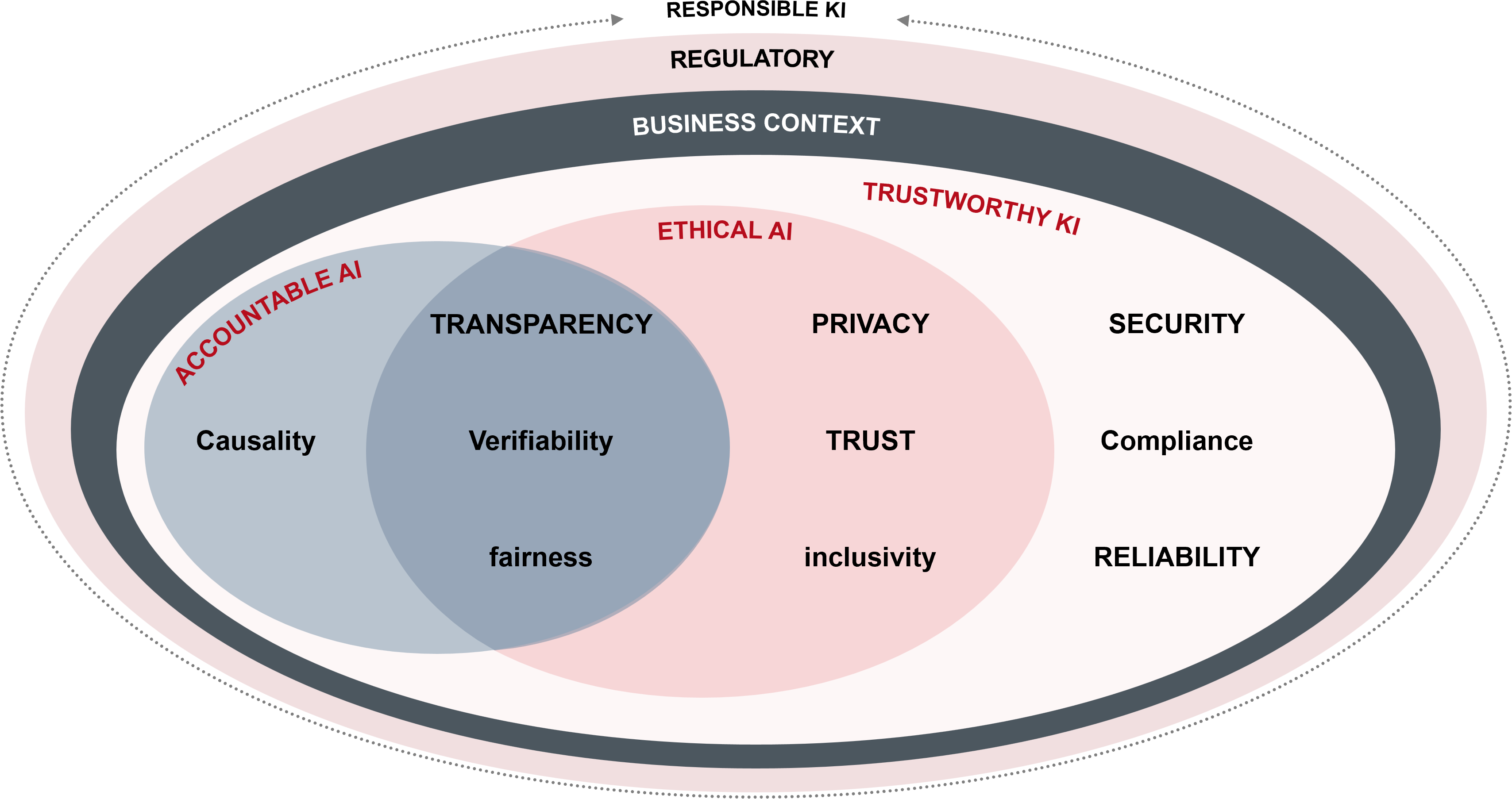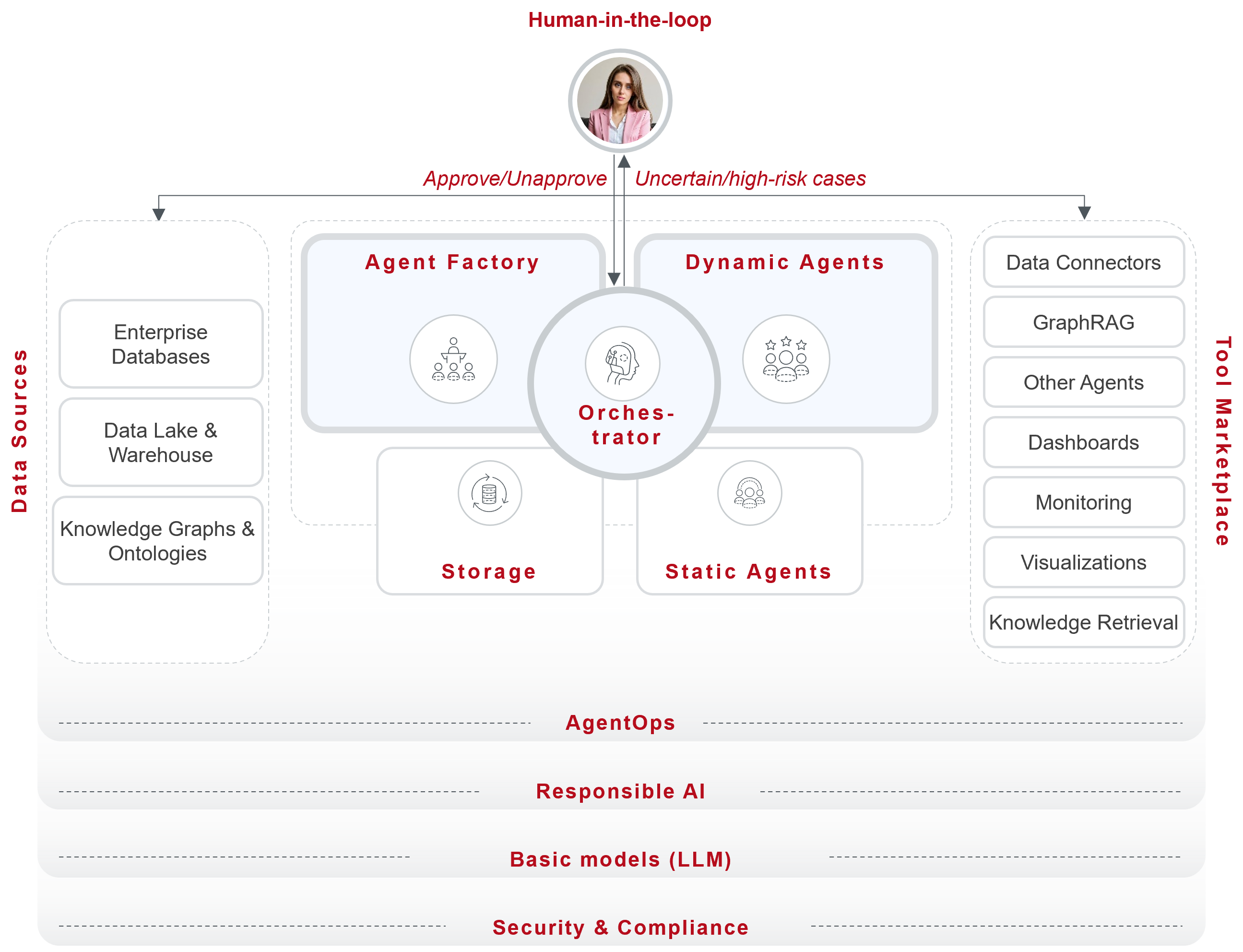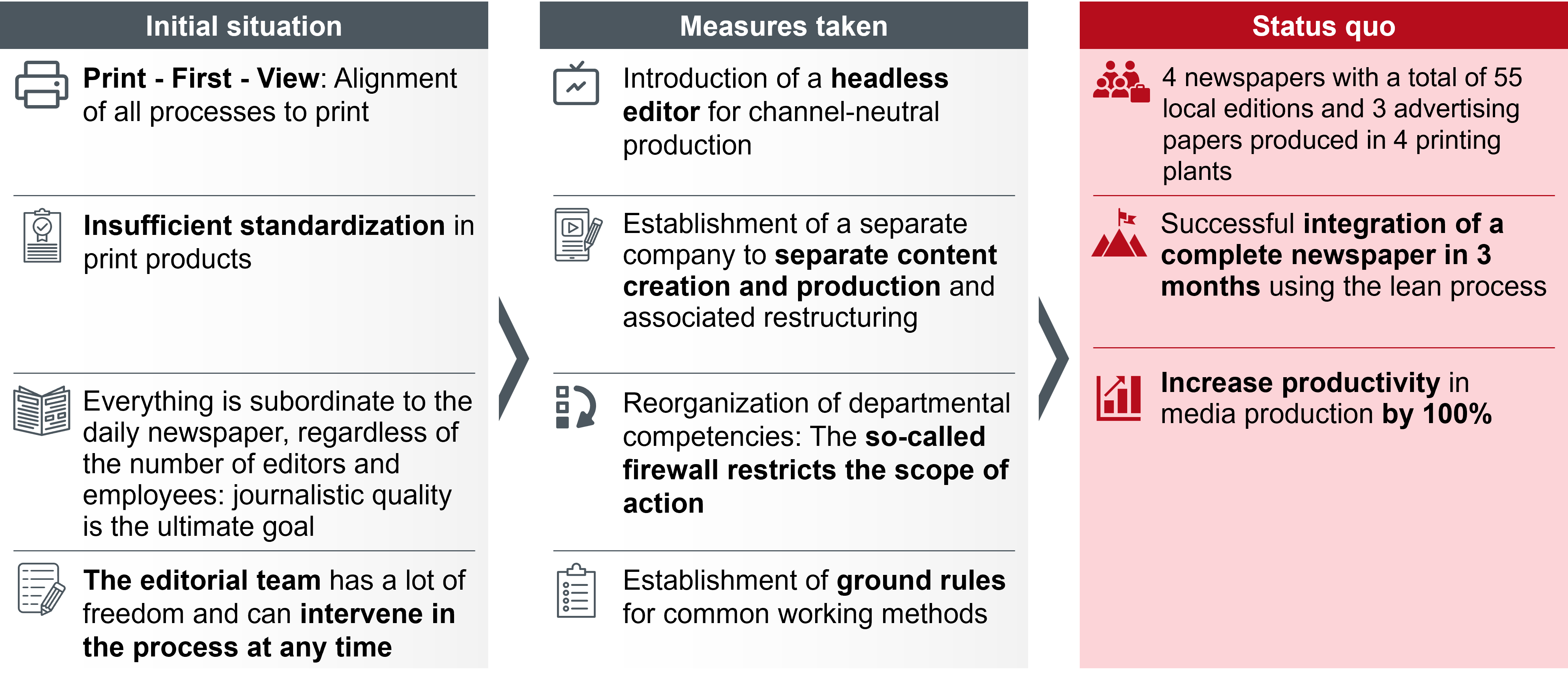AI - The unwanted savior of traditional publishing
Key Facts
- AI reduces operational activities and creates space for creative, high-quality editorial content.
- Automated channel-neutral content production enables efficient use of digital and printed channels.
- Print production with AI leads to 28% time savings per issue and increases efficiency by up to 100%.
- CORE AI framework systematically structures the introduction of AI and overcomes fragmented strategies
- Strategic overall cost reduction through AI enables significant savings to finance new business models.
Introduction
"Education and technology belong together - they free the mind for higher tasks, while machines take over the routine." Nikola Tesla's vision seems more relevant today than ever. But while other industries have long since begun to implement this symbiosis, traditional publishing is in danger of being left behind. If publishers do not act quickly, they run the risk of becoming irrelevant - similar to established banks whose customer interface has been taken over by digital challengers such as Revolut or N26.
In an era where platforms such as ChatGPT are increasingly curating content and delivering it directly to users, publishers can no longer hesitate. Instead of blocking creative forces with repetitive operational processes, it is crucial to use artificial intelligence (AI) to create space for real value creation: telling inspiring stories, imparting knowledge and creatively designing content that moves people.
Editorial teams can already benefit from AI today: through automated distribution, personalized content and data-driven topic planning. Intelligent algorithms speed up editing processes and increase their quality, while planning, page creation and ad placement can be made more efficient in print production. According to the Reuters Institute, 87% of media managers have already experienced how generative AI has fundamentally changed their editorial departments.
The decision is clear: those who actively shape change will remain relevant. Those who hesitate risk being displaced by technological challengers. This blog post therefore shows how publishers can use AI not just as an efficiency-enhancing tool, but as an essential building block of their future viability - to revitalize the core essence of publishing and be successful in the long term.
AI-Strategy
The successful implementation of artificial intelligence in the publishing industry requires asystematic and step-by-step approach (see Figure 1). It is crucial to design the adaptation process step by step in order to minimize risks and promote acceptance.

Figure 1: CORE AI adaption framework
How quickly the degree of adaptation is increased depends on what foundations have been laid in the development of the AI framework conditions. This should be done step by step in several successive stages. The most important steps and framework conditions are summarized in the following figure.

Figure 2: Necessary AI framework conditions
- AI North Star: The starting point of every AI transformation begins with clear strategic goals and a lighthouse project. The aim is to link overarching corporate goals with the use of AI. Important influencing factors here are the company's individual AI maturity, the competitive landscape and macroeconomic conditions. These elements help to set a realistic horizon of expectations and reflect the positioning in the market. A specific use case with high visibility serves as the first step. The aim is to prove operational
relevance, generate learnings and change the mindset - ideally in an area with a low implementation hurdle and clear benefits. In the publishing industry, the topic of print production lends itself to this, which is discussed in more detail in the following chapter - Value realization: The next step is the concrete economic evaluation of potential AI use cases. The focus here is on two aspects: firstly, the prioritization of use cases that are directly related to business or editorial goals, and secondly, the qualitative and quantitative estimation of business value - for example through ROI simulations, return on investment or savings potential. The focus is now on scaling the benefits. Initial
systematic measures are taken to increase productivity, KPIs are defined and the first frameworks for measuring success are established. The aim is to scale benefits and anchor them structurally. - AI organization: The next step is the concrete economic evaluation of potential AI use cases. The focus here is on two aspects: firstly, the prioritization of use cases that are directly related to business or editorial goals, and secondly, the qualitative and quantitative estimation of business value - for example through ROI simulations, return on investment or savings potential. The focus is now on scaling the benefits. Initial
systematic measures are taken to increase productivity, KPIs are defined and the first frameworks for measuring success are established. The aim is to scale benefits and anchor them structurally. - AI technology components: The fourth step is the technical design, which focuses on three core areas: (1) Data for AI - with a focus on architecture, integration, data quality and building scalable pipelines - AI cannot work without a solid, high-quality database (2) Technology - including the selection of suitable tools, cloud infrastructures, security systems and software integration; and (3) Governance - for monitoring, risk assessment, cost control and rule-setting for trustworthy AI operations.
Publishers face numerous challenges along the way, both of a technical and organizational nature. One of the main hurdles is the technological maturity of the available solutions - not every AI application is suitable for productive use or can be smoothly integrated into existing toolchains. At the same time, there can be considerable organizational resistance: Employees cling to familiar processes, which can lead to acceptance problems without targeted change communication.

Figure 3: Classification of AI requirements in the business context
Data protection and ethical issues represent another significant challenge. Particular care must be taken when handling personal data. In the publishing industry in particular - as a vehicle for forming public opinion - the handling of generated information must be particularly responsible. Anchoring ethical principles in all development and application phases is essential. Bias control, transparency obligations and human validation (human-in-the-loop) are therefore part of the standard repertoire of ethical AI.
Once the organizational and technical homework has been done, the supposedly obvious question comes to the fore: Which model or solution should we use now? But this is exactly where the next strategic trap lurks. Many companies invest prematurely in a single AI model - and end up in vendor lock-in. What seems practicable in the short term becomes an obstacle to innovation in the long term. To avoid this vendor lock-in and ensure long-term flexibility, it is crucial to build an orchestrated AI platform (see Figure 4). It forms the strategic backbone of a scalable AI landscape and enables the modular integration of different models and tools as well as the integration of dynamic and static agents into editorial workflows. This platform is based on a shared storage and data infrastructure - such as data lakes, knowledge graphs and semantic search systems - and is supplemented by a tool marketplace (e.g. graph RAG modules, data connectors). The ability to quickly integrate new modules makes the platform highly future-proof and adaptive. The central control element is the AI Orchestrator. It monitors processes, manages agents, prioritizes tasks and ensures that sensitive decisions are escalated automatically.
Humans remain involved in the decision-making process (human-in-the-loop) in order to check critical content, safeguard ethical standards and bear overall responsibility. The result is an intelligent, flexible and trustworthy AI ecosystem - tailored to the requirements of modern media
companies.

Figure 4: CORE AI-Plattform
But not every entry into the world of AI has to start with the development of a comprehensive platform. Our following practical example shows impressively how significant efficiency gains can be achieved with a targeted lighthouse project - in this case a productivity increase of up to 100%. It illustrates how preparatory measures, clear organizational rules and technological standards can create the basis for automated media production.
Case study: Transformation of a print-first publishing house
through AI and process optimization
The following case study on the automation of print production at a German publishing house, which initiated its transformation with a targeted lighthouse project and is summarized in Figure 5, shows how a well thought-out AI strategy can be put into practice. The BDZV's AI maturity report states that 87% of German editorial teams that use AI report noticeable time savings in the production process - an average of 28% less layout time per issue. In the reference project, a productivity increase of 100% was achieved. How exactly this was achieved is discussed in the following chapter.
 Figure 5: Reference project automation print production
Figure 5: Reference project automation print production
The central prerequisite for success was consistent preparation: in order to create the conditions for an automated production landscape, a detailed analysis of the entire production and inheritance logic was carried out. In particular, the high variance in layout requirements, unclear responsibilities in page production and a complex interplay between editorial and advertising management called for clear interventions. The targeted reduction of complexity - for example in regional variants, special publications and ad placements - made it possible to create stable standards. These in turn formed the basis for new, simplified work processes and clear role assignments. On this basis, optimization potential was identified, fundamental inheritance structures were revised and new rules for collaboration were defined. A headless editor enabled the channel-neutral creation of content that could be planned and produced independently of the subsequent playout channel. At the same time, production responsibility was organizationally separated from editorial work - supported by a so-called "firewall" between editorial and media production.
At a technical level, standardization and automation became the key success factors: a combination of new tools, clearly defined article sizes (T-shirt logic), automated workflows and system-supported layout processes led to a high degree of efficiency. In addition, test productions
with simulated live operating data were carried out during the implementation phase in order to train the systems and identify potential faults in advance. Clear definitions of responsibilities - for example for ad deadlines, correction approvals and page responsibility - ensured transparency throughout the entire process. The automatic placement of content and advertisements, supported by defined placement books and flexible templates, enabled a largely autonomous page layout.
The result: in just three months, a complete newspaper with several local editions and advertising supplements was integrated into the existing production line - without additional staff. As mentioned at the beginning, productivity in media production increased by 100%. This is clear proof that with proper preparatory work, consistent standardization and AI-supported automation, not only efficiency gains but also real scalability can be achieved.
Conclusion: Systematically achieving a high level of AI maturity
The transformation to a high level of AI maturity cannot be achieved through technology alone. If you want to make meaningful use of AI in publishing, you need a structured approach - from the idea to the impact. Our tried-and-tested CORE model with its four phases (lighthouse, value
realization, organization, tech components) provides reliable guidance.
A simple self-check shows whether you as a publisher are on the right track. If you can answer "yes" to at least 80% of the following questions, your organization is ready to use AI strategically:
- Lighthouse: Are there strategic goals for the use of AI
- Lighthouse: Have operational processes already been standardized for later automation?
- Lighthouse: Are the first agent-based workflows in use or being piloted?
- Tech components: Have you formulated ethical and data protection guidelines for the use of AI?
- Value realization: Have you identified a clearly defined use case with business benefits?
- Organization: Is there a central team or responsible roles for AI?
- Tech components: Have you defined clear approval processes and responsibilities for AI content?
- Tech components: Do you have sufficiently structured and accessible data?
- Tech components: Is your technical infrastructure modular and expandable?
- Tech components: Is the quality of AI results regularly reviewed and improved?
These questions make it clear: Those who are prepared in a structured way can scale faster, produce more efficiently and develop new business models. Those who do not act quickly risk losing relevance. According to the INMA, OpenAI and other leading AI companies are already testing news summaries that could be delivered to users at specific times in a personalized manner and are able to process news pages and APIs. In addition, a large number of start-ups are working on AI solutions for the media industry.
CORE supports media companies in the development and implementation of customized AI strategies - with methodological expertise, technological know-how and a deep understanding of the industry. Because one thing is certain: without a solid foundation, AI remains just a promise. With the right model, it becomes a multiplier for journalistic excellence and economic stability.
Questions? Ask our experts
Expert En - Artur Burgardt
Artur Burgardt is Managing Partner at CORE. He focuses, among other things, on the conceptual design and implementation of digital products. His focus is on identity management, innovative payment ...
Read moreArtur Burgardt is Managing Partner at CORE. He focuses, among other things, on the conceptual design and implementation of digital products. His focus is on identity management, innovative payment and banking products, modern technologies / technical standards, architecture conceptualisation and their use in complex heterogeneous system environments.
Read less


